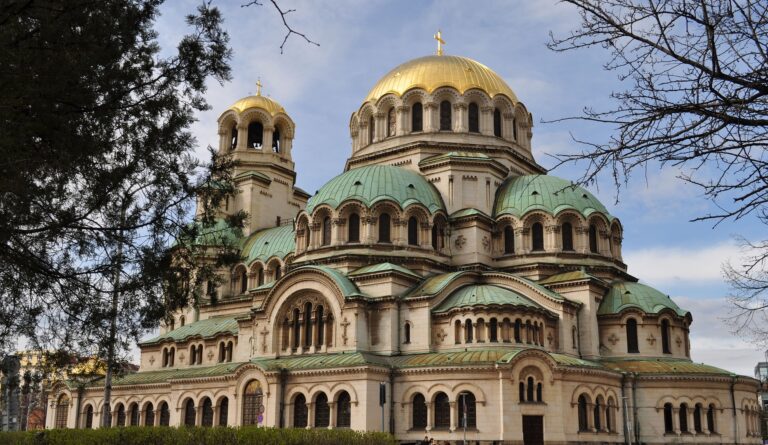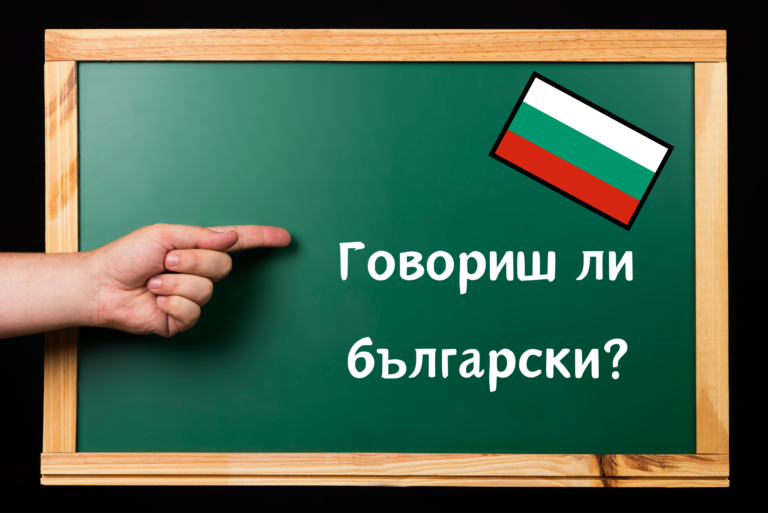Bansko dialect – The south Bulgarian dialect
Table of contents
- Introduction
- Origins and Evolution
- Geographical Distribution
- Phonological Features
- Lexical Characteristics
- Grammatical Structure of the Bansko Dialect
- Cultural Significance of the Bansko Dialect
- Relationship to Other Bulgarian Dialects
- Preservation Efforts
- Modern-Day Usage of the Bansko Dialect
- Conclusion
Introduction
The Bansko dialect is a unique variety of the South Bulgarian dialect spoken primarily in and around the town of Bansko in southwestern Bulgaria. It is part of the larger group of Bulgarian dialects and is recognized for its distinct phonological, grammatical, and lexical characteristics. As one of the southernmost Bulgarian dialects, it has been shaped by the region’s rich history, influenced by Thracians, Slavs, Greeks, and even Turks due to centuries of interactions.
Linguists consider the Bansko dialect a valuable piece of Bulgaria’s linguistic mosaic, offering insights into how languages evolve in contact with different cultures. Over time, this dialect has not only preserved certain archaic features of the Bulgarian language but has also absorbed external influences, making it a testament to the historical and cultural crossroads that the region represents.
Origins and Evolution
The Bansko dialect, like many regional dialects, has deep roots in the history of the region. It originated from the Old Bulgarian language, with layers of influence from the Thracians and Slavs, who settled in the region during the early medieval period. The dialect evolved through centuries of interactions with neighboring cultures, especially during the Ottoman period, when Greek and Turkish had a significant impact on the local vernacular.
The dialect’s evolution can be traced back to the time of the Second Bulgarian Empire (1185–1396), when Bansko was a key trade and cultural center.
Actually, the town’s strategic location facilitated contact with merchants, travelers, and scholars from various parts of Europe, further enriching the local dialect. Over time, while maintaining its Slavic core, it absorbed numerous loanwords from Greek, Turkish, and even Italian due to the region’s trade connections.
Geographical Distribution
The Bansko dialect is primarily spoken in Bansko, a town nestled in the Pirin Mountains of southwestern Bulgaria. It is part of the larger South-Western Bulgarian dialect group and shares certain similarities with the dialects of neighboring regions, such as the Rhodope dialect and the Pirin dialect. However, the Bansko dialect has its unique features that set it apart from these neighboring varieties.
Geographically, the dialect is spoken not only in Bansko but also in several nearby villages, including Dobrinishte and Razlog. Beyond this core area, its influence diminishes, and other regional dialects take precedence. Interestingly, the dialect shows marked variations even within this small geographic range, reflecting the isolation of certain communities over the centuries.
Phonological Features
One of the most distinguishing features of this dialect is its unique phonology. The dialect is known for several key phonetic shifts that differentiate it from Standard Bulgarian. These include variations in vowel pronunciation, consonant shifts, and the phenomenon of palatalization, which is common in many Slavic languages but manifests in distinctive ways in Bansko.
Vowel Pronunciation in Bansko Dialect
Vowels often differ from their counterparts in Standard Bulgarian, both in terms of quality and length. For example, the vowel “a” is frequently pronounced as a more open sound, and there is a tendency for vowel reduction in unstressed syllables, a feature that is less pronounced in Standard Bulgarian.
Additionally, it exhibits diphthongization in certain cases, where two vowel sounds are pronounced together in a single syllable.
Consonant Pronunciation in Bansko Dialect
Consonants also show distinct patterns. One of the most notable features is the palatalization of certain consonants before front vowels. This is particularly noticeable in the pronunciation of “k” and “g,” which are softened to “ch” and “zh” sounds in certain contexts. This feature is shared with other South Bulgarian dialects but is particularly prominent in Bansko.
Grammatical Structure of the Bansko Dialect
The grammatical structure reflects its deep Slavic roots but also shows unique local adaptations. Like Standard Bulgarian, the Bansko dialect uses noun and verb inflections to indicate gender, number, and case. However, there are key differences in how these inflections are applied.
Noun Declension
In the Bansko dialect, nouns are inflected based on gender (masculine, feminine, neuter), number (singular, plural), and case (nominative, accusative, dative). While Standard Bulgarian has largely lost its case system, traces of the older case system are still evident in the Bansko dialect, particularly in the use of dative constructions to indicate possession or indirect objects.
Verb Conjugation
Verb conjugation follows the general pattern of Slavic languages but with some regional variations. Verbs are inflected for tense, mood, and aspect, but the endings for past tense verbs, in particular, show deviations from Standard Bulgarian. Additionally, the Bansko dialect retains some archaic verb forms that have disappeared from the standard language.
This table shows the differences in spelling and letters between Standart Bulgarian and Bansko Dialect
| Feature | Standard Bulgarian | Bansko Dialect | Explanation |
|---|---|---|---|
| Noun Declension (Singular Definite Article) | Къщата (The house) | Кущта (The house) | The vowel "а" shifts to "ъ" in the Bansko Dialect, altering the word's pronunciation. |
| Verb Conjugation (1st Person Singular Present) | Аз говоря (I speak) | Я говоря (I speak) | The pronoun "Аз" (I) is replaced with "Я", a common feature in the Bansko Dialect. |
| Verb Tense (Past Simple) | Той ходи (He went) | Той отиде (He went) | The Bansko Dialect retains older verb forms for the past tense. |
| Pronunciation of “е” Sound | Дете (Child) | Д'те (Child) | The vowel "е" is often shortened or omitted in the Bansko Dialect. |
| Pronunciation of “o” Sound | Молив (Pencil) | Мульв (Pencil) | "O" is pronounced more like a nasal "у" in the Bansko Dialect. |
| Borrowed Word (Greek/Turkish Influence) | Чанта (Bag) | Сак (Bag) | The Bansko Dialect borrows words from Greek and Turkish, such as "сак" instead of "чанта". |
| Verb “to have” (1st Person Singular) | Аз имам (I have) | Я имам (I have) | Similar to verb conjugation, "Аз" is replaced by "Я" in this form. |
| Word for "Tomorrow" | Утре (Tomorrow) | Утро (Tomorrow) | A slight vowel shift from "е" to "о" in the Bansko Dialect. |
| Pronunciation of "и" Sound | Мисля (I think) | Мусля (I think) | The "и" sound shifts to "у" in the Bansko Dialect. |
| Word for "Bread" | Хляб (Bread) | Леб (Bread) | The Bansko Dialect drops the initial "х" in some words, simplifying pronunciation. |
For more detailed review, go to https://bulgariandialectology.org/locations/bansko
Lexical Characteristics
The lexicon is a rich tapestry of native Slavic words and loanwords from neighboring languages. Due to Bansko’s location at a crossroads of cultures, the dialect has borrowed extensively from Greek, Turkish, and even Italian. This has led to the development of a unique vocabulary that reflects the region’s diverse history.
Influence of Neighboring Languages
Greek, in particular, has had a significant impact on the Bansko dialect, especially in terms of vocabulary related to trade, religion, and daily life. Turkish loanwords are also prevalent, a legacy of the Ottoman Empire’s centuries-long rule over Bulgaria. These borrowed words are seamlessly integrated into the dialect and are often used alongside native Bulgarian terms.
Cultural Significance of the Bansko Dialect
The Bansko dialect is more than just a linguistic curiosity; it is a key part of the region’s cultural identity. Many local traditions, folk songs, and proverbs are preserved in the dialect, and it plays a central role in the town’s cultural festivals and celebrations. The dialect is also used in traditional storytelling, with many local legends passed down through generations in the Bansko vernacular.
Relationship to Other Bulgarian Dialects
While the Bansko dialect is part of the larger South-Western Bulgarian dialect group, it is distinct in several ways from neighboring dialects like the Rhodope and Pirin dialects. For example, the vowel shifts and consonant palatalization found in the Bansko dialect are more pronounced than in these other dialects, and the influence of Greek and Turkish is more extensive.
Preservation Efforts
Efforts to preserve the dialect have been ongoing for several decades. Local linguistic organizations and cultural institutions have worked to document the dialect and its unique features. These efforts include the recording of oral histories, the publication of dictionaries and grammars, and the promotion of the dialect in local schools and cultural events.
Modern-Day Usage of the Bansko Dialect
In modern times, the Bansko dialect faces challenges due to the dominance of Standard Bulgarian and the influence of globalization. However, local communities are working hard to keep the dialect alive. In Bansko, the dialect is still spoken by many older residents, and younger generations are being encouraged to learn and use it through local cultural initiatives.
Conclusion
The Bansko dialect is a fascinating and vital part of Bulgaria’s linguistic heritage. While it faces challenges in the modern world, efforts to preserve and promote the dialect are ongoing. Its rich history, unique phonology, and cultural significance make it an important subject of study for linguists and a cherished part of the identity of the people of Bansko.
FAQ
The Bansko dialect is primarily spoken in Bansko, a town in southwestern Bulgaria, and its surrounding villages.
It differs from Standard Bulgarian in terms of phonology, grammar, and vocabulary, with influences from Greek and Turkish.
It is known for its distinct vowel and consonant shifts, as well as its use of archaic grammatical forms and borrowed vocabulary from neighboring languages.
While it is still spoken by many older residents, its use is declining among younger generations. However, efforts are being made to preserve it.
It has evolved through centuries of contact with other languages and cultures, particularly Greek, Turkish, and Italian, which have influenced its vocabulary and grammar.
Local linguistic organizations and cultural institutions are working to document the dialect, promote its use in schools, and preserve it through recordings, dictionaries, and festivals.




